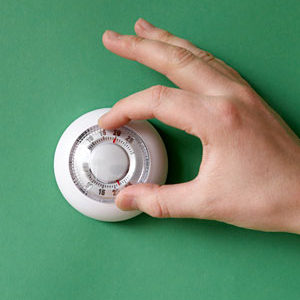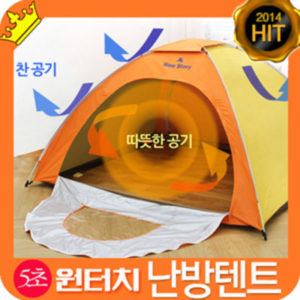
Maximizing Savings in Korea: Part II (Your Heating Bill in Winter)
Continuing on in the stretch your won series, this post will examine ways you can help cut down on your heating bills during the freezing and often bone-chilling Korean winters. Don’t be left both broke and freezing this winter!
Cutting Down on Your Heating Bill During Winter
Assess a Potential House to Move in For All Four Seasons
Korea’s seasons are fickle and temperamental which, on a yearly basis, takes you from sweltering, humid conditions to freezing and dry winds. When you’re choosing a place to live, you should always consider all the factors and attributes of the house and how they’ll play out during all four of Korea’s seasons. For example, that chill looking rooftop house with the huge windows and killer views may seem awesome for spring and summer but come winter time you’re just about guaranteed to play an unwilling part in a Korean remake of Frozen. Having a house with many large windows facing the open air will mean temperatures will rise and drop, in summer and winter respectively, at an accelerated pace and play a larger influence in the temperature for the rest of your house (the same goes for a veranda or patio that faces the open air). The direction of the house and how much sunlight it receives will affect indoor temperatures as well. Also examine details such as the potential home’s doors to see if there are large gaps between the floors and doors where cold air can blow in and heat escape.
Make sure to ask the realtor showing you around how old the building is and if there have been any renovations that have been made. In general, newer and recently renovated buildings tend to be built with better insulating materials. If you’re particularly susceptible to coldness, consider units/homes that are in between floors. In Korea, homes are mostly heated through the floor (or ondol) and, as you may recall from school, heat rises. So if you’re sandwiched between units that are above and below you (and even next to you) the heat from those units/floors tend to help keep your place warmer as well. In contrast, units/floors located right below or on the rooftop and on the ground or below ground are usually coldest in a building. And, of course, it should go without saying that the larger the home, the more heating you will require so consider that before you automatically go for the house with the huge floor space!
Know Your Temperature Control Settings and Use it to Your Advantage
The temperature control setting in your home may look intimidating at first if you don’t know Korean but it’s wise to familiarize yourself with it and all its functions. Many of the modern controls come with a number of settings that can be used to your advantage including selecting the season, timer control for heating, and mode selection such as when you’re out of the house for an extended period of time.
On the other hand, if you’re accustomed to simply turning your heating on and off when you’re in and out of your house, your boiler will have to work harder to bring up the temperature each time you turn it back on. Instead, setting your heating system on an “Out of the Room” setting (called ‘외출’ in Korean) will program the system to keep temperature above a minimum you set so temperatures don’t yo-yo back and forth between single and double digits all the time while racking up your heating costs. This same setting also comes in handy when you’re away from your house for an extended period of time (such as during a trip) during the winter as it will help prevent your water pipes from freezing. And, trust me, you don’t want to go through the headache (and staggering costs) of having to replace your water pipes in the middle of winter. In fact, the cost of replacing your boiler will almost surely come out even more than your heating bill!
If you’re not sure about your heating system’s settings, ask your Korean landlord, realtor, or a Korean- speaking friend to run through the controls and settings for you!
If the Boiler is Running But Temperatures Aren’t Rising, Examine Your Boiler and Pipes
If your boiler is running but indoor temperatures remain chilly while your heating bill is still coming out high, the problem may lie within your boiler itself. The older a boiler is and the more it’s used you’re likely to see a buildup in its pipes and a buildup in the pipes means a less effective boiler. If you’re finding your heating bills a little too suspiciously high for too little results, ask your landlord to have someone come and examine your boiler.
If you’re house shopping, make sure to ask your realtor how old the boiler is and how much the monthly heating bill came out on average for the previous tenant during winter.
Increase Heating Efficiency With a Humidifier
A humidifier is not only handy in combating the dry and arid winter but it can increase efficiency in heating as well. This is because the vapors from a humidifier aid in increasing the air circulation which in turn aids the transmission of heat throughout your house. So make better use of your humidifier from now on when you’re heating your house!
Know What the Right Temperature for Your House is
Having a base temperature that’s right for you and your house is important so you can regulate and adjust through the winter’s varying temperatures and conditions. Raising and lowering the temperature settings by a degree or two at times won’t make as much of an impact on your bills but it definitely will if you’re cranking up and down the settings willy-nilly. Experts in Korea recommend leaving your temperature between 18 and 20 degrees Celsius during the winter season but this will all depend on both your house and how tolerant to cold you are. Plus, having a regular base temperature will give you a good look at what your heating bill will be on average and which you can compare with if there are any strange irregularities with your bill.
Maintain Your Heating With Tools Like Bubble Wrap and Indoor Curtains

Patterned and colored bubble wrap are just some of the design insulation wraps you can purchase
Image source: http://goodbuyselly.com/
Once you know what the right temperature setting for your house, you’re going to want to maintain that heat the best you can. Large windows, gaps between doors, any holes or cracks are all weak spots in your home’s insulation that you want to fix right away. You can always do a simple check for windy spots by holding up a small open flame such as a lit candle in any suspicious spots (just be sure to exercise caution with any lit flame indoors).
For windows that face outside, make use of all that bubble wrap from your delivery items and spray a little water on your window to paste your bubble wrap on the window glass for better insulation. A number of experiments have shown that the use of bubble wrap on windows helped increase insulation and raise indoor temperatures by 2-3 degrees on average. And, no worries if you’re concerned putting up bubble wrap may come off as tacky looking as you can even buy decorative and patterned bubble wrap specifically for insulating!
You can increase insulation efficiency further by purchasing and installing heavy indoor curtains for your windows. Open the curtains when there’s sunlight streaming in to help warm up the house and close them when the sun is down to keep heat inside. Also make sure to seal away any cracks and holes and pick up a few inexpensive door gap fillers to keep those pesky winds out of your house!
Electric Heating Appliances Can Be Your Best Friend…or Your Worst Enemy
If you’re not from Korea and get caught off guard by your first chilly winter here, the temptation may be to immediately purchase an electric heating appliance (such as a heating fan, electric blanket, etc) and crank it up. But what you may end up instead with is a spike in your electric bill for the month. Using electric appliances can be a blessing or a curse so check the energy efficiency of the equipment and resist the temptation to keep it on 24/7 on its full settings. You should also know that certain items such as electric blankets have been the subject of debate for possible side effects in long term use. People have also gone to the hospital with severe burns from sleeping with them on so exercise caution!
Camping Equipment Can Be Your Best Friend
If you’re one of those really frugal types, you may want to channel your inner camper to make use of camping equipment when sleeping. Heavy duty sleeping bags and well-insulated tents can be a small investment if you’re looking to really save on your heating bills without sacrificing your sleep. But make sure you don’t turn off your boiler completely in freezing temperatures if you choose to do so! A frozen boiler, like I said before, is absolutely no fun!
Have any other tips you want to share on how you keep your bills down during winter? Share with the rest of us below!


